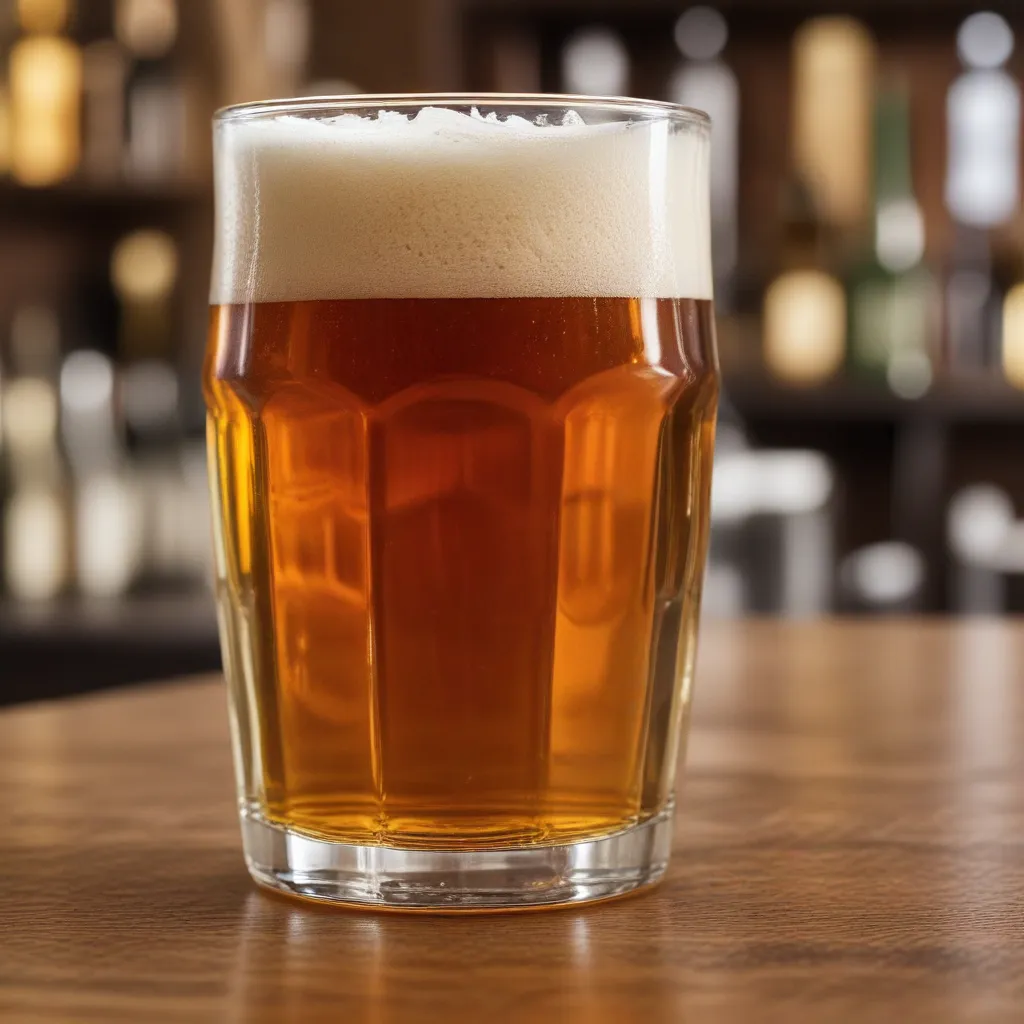
In the ever-evolving landscape of the hospitality industry, the impact of serving size on alcohol consumption has been a topic of ongoing research and discussion. Recent studies conducted by the University of Cambridge have shed light on a remarkable finding: reducing the serving size of beer, lager, and cider could potentially lead to a significant decrease in their consumption.
Beer Consumption Trends
The research, published in the open-access journal PLOS Medicine, reveals that when venues in England were asked to remove the pint serving size and instead offer two-thirds pints as the largest option, the daily mean volume of beer, lager, and cider sold dropped by a remarkable 9.7%. This finding aligns with previous research conducted by the same team, which demonstrated that serving wine in smaller glasses is associated with a decrease in sales.
Impact of Pint Glass Removal
The study involved a short-term intervention period of four weeks, where participating venues were asked to remove the pint serving size and offer two-thirds pints as the largest option. This was followed by a four-week non-intervention period before and after, allowing for a comparison of sales data.
Consumer Behavior and Glass Type
The researchers found that while the removal of the pint serving size did not elicit any complaints from customers, it did have a tangible impact on their drinking habits. Interestingly, the study also noted a slight increase in the amount of wine purchased, with one pub contributing to half of this increase. This suggests that some customers may have compensated for the reduced beer consumption by opting for alternative alcoholic beverages.
Factors Influencing Beer Sales
The researchers emphasize that further assessment is needed to determine whether people fully compensated for the reduced beer consumption by drinking other alcoholic drinks. Nevertheless, the intervention merits consideration for inclusion in alcohol control policies, as it presents a novel approach to potentially reducing alcohol consumption and its associated health risks.
Potential Implications of Pint Glass Changes
Economic Considerations
From an economic standpoint, the reduction in beer sales could have significant implications for the hospitality industry. Venues that rely heavily on beer sales may need to adapt their business models to accommodate the shift in consumer preferences and the potential loss of revenue.
Consumer Preferences
The study’s findings highlight the influential role that serving size can play in shaping consumer behavior. By reducing the largest serving size, venues may be able to encourage customers to consume less, potentially leading to improved health outcomes at both the individual and population levels.
Industry Adaptations
As the hospitality industry grapples with these findings, it will be interesting to observe how venues and brewers respond. Some may choose to proactively adopt the smaller serving size, while others may resist the change, fearing a potential backlash from customers who prefer the traditional pint.
Regulatory Perspectives on Pint Glasses
Legal and Policy Frameworks
Policymakers and regulatory bodies may also need to consider the implications of these findings and whether they should be incorporated into existing or future alcohol control policies. The potential public health benefits of reducing alcohol consumption could make this a compelling consideration for lawmakers and health authorities.
Sustainability Considerations
Additionally, the shift away from the traditional pint glass could have broader sustainability implications. Smaller serving sizes may lead to reduced glass waste and energy consumption associated with the production and transportation of larger vessels.
Industry Stakeholder Reactions
It remains to be seen how the industry as a whole will respond to these findings. Some hospitality venues may embrace the change, while others may face resistance from customers who are accustomed to the pint serving size. Ultimately, the success of this intervention will hinge on the industry’s ability to navigate the complex balance between consumer preferences, economic realities, and public health considerations.
Innovations in Glassware and Serving
Alternative Glass Designs
As the industry adapts to these findings, we may see the emergence of innovative glassware designs that cater to the changing preferences of consumers. Venues may experiment with a range of serving sizes, including the traditional pint, two-thirds pints, and potentially even smaller options, to provide customers with more choice and flexibility.
Technological Advancements
Technological advancements in the production and distribution of glassware may also play a role in facilitating this shift. Streamlined manufacturing processes and efficient logistics could make it easier for venues to adopt and implement new serving sizes.
Changing Consumer Expectations
Furthermore, the study’s findings may influence consumer expectations and perceptions around alcohol consumption. As the public becomes more aware of the potential health benefits of smaller serving sizes, there may be a gradual shift in societal attitudes towards responsible drinking.
The implications of this research extend far beyond the realm of beer sales. By prompting a rethinking of serving sizes, the findings could have a ripple effect on the entire hospitality industry, shaping consumer behavior, regulatory frameworks, and the way we approach alcohol consumption as a society.
At the Wine Garden Inn, we are closely following these developments and considering how they might influence our own approach to wine and food service. As purveyors of exceptional culinary delights and wine pairings, we recognize the importance of staying attuned to evolving industry trends and consumer preferences. By embracing innovation and prioritizing public health, we aim to provide our guests with an unparalleled experience that balances indulgence with responsibility.
